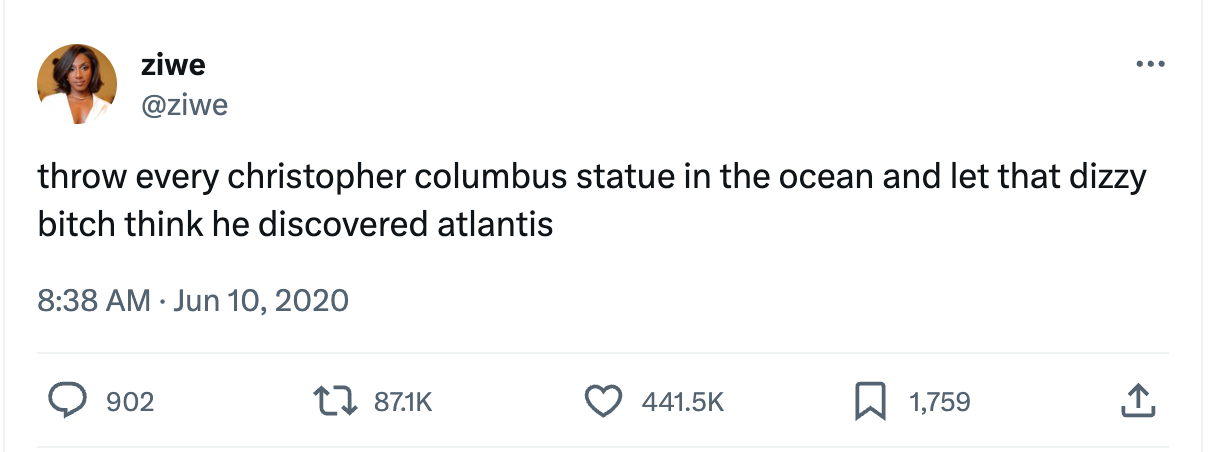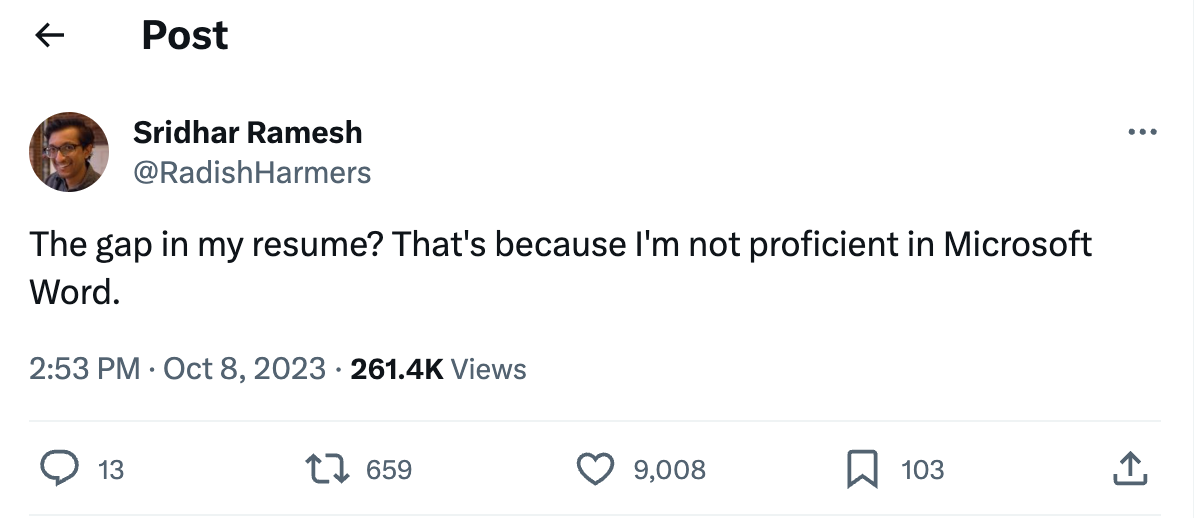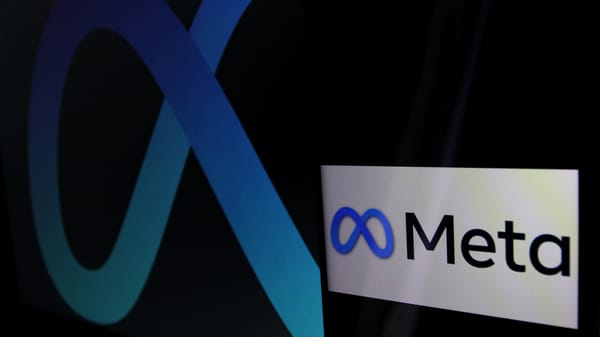How the attacks in Israel are changing Threads
Three months into its existence, the app’s purpose may be coming into focus — if Meta will embrace it

Today, after a long weekend of awful terrorist violence in Israel, let’s talk about the shifting landscape for social networks amid the current crisis — and consider the path ahead for Meta’s Threads app.
I.
For more than a decade, whenever calamity struck, hundreds of millions of people flocked to Twitter. Its blend of first-person accounts, verified journalists sharing reporting and context, and a broad range of commentary made it the best app for understanding what was going on in the world at any given moment.
Twitter was by no means perfect, of course. It amplified misinformation, provided a stage for ideologues and grifters, and generally pushed public discourse further to extremes. But to a certain kind of news junkie, Twitter was indispensable. At its best, it gathered expertise around the day’s biggest story and disseminated it widely. In doing so, it carved out a niche that none of its rivals were ever able to replicate.
Fast-forward to today, and Twitter no longer exists. In its place is X, which floats in a kind of liminal space between the interest-based network it used to be and the payments processor / jobs board / everything app that owner Elon Musk wishes it to become. After years of dragging its feet, Twitter eventually invested in the trust and safety functions needed to maintain some standard of information quality during a catastrophe. At X, though, Musk has gradually purged most of the company’s trust and safety workers and inveighed against content moderation in general.
Over the weekend, Musk’s approach to platform integrity met with its biggest test to date. And anyone still relying on the app for real-time news was in for a rude awakening.
In a piece for Wired titled “The Israel-Hamas War Is Drowning X in Disinformation,” David Gilbert reported that the app was flooded with “old videos, fake photos, and video game footage at a level researchers have never seen.” At a time when open-source intelligence researchers would normally be scouring the network for first-person accounts from the attacks, they instead had to sift through previously unseen levels of garbage.
Rather than being shown verified and fact-checked information, X users were presented with video game footage passed off as footage of a Hamas attack and images of firework celebrations in Algeria presented as Israeli strikes on Hamas. There were faked pictures of soccer superstar Ronaldo holding the Palestinian flag, while a three-year-old video from the Syrian civil war repurposed to look like it was taken this weekend. […]
Many of these videos and images racked up hundreds of thousands of views and engagements. While some later featured a note from X’s decimated community fact-checking system, many more remained untouched.
Musk, for his part, warned users away from trusting mainstream journalists on the subject, instead promoting two accounts that are known spreaders of misinformation. (In May, both promoted a false story that there had been an explosion near the White House, briefly sending stocks tumbling, the Washington Post reported.)
Given the exodus of full-time and contract moderators at X, Musk has actively promoted Community Notes, the crowd-sourced fact-checking tool previously known as Birdwatch. But the events of the past weekend showed why Community Notes is no match for the volume of misinformation promoted by the platform’s current verified accounts.
On Threads, Alex Stamos of the Stanford Internet Observatory found several verified accounts sharing a video that purported to show violence in Israel that actually showed a celebration of a football championship in Algeria in 2020.
“Sadly, the destruction of the teams Twitter put in place to fight organized manipulation makes it harder for individuals to speak to a global audience as their message gets buried by troll farms, state propaganda organs and grifters,” he wrote.
At press time on Monday, if you searched for “If Russia did this in Kiev,” seven out of the 10 top posts showing this video, and with the same message, do not have Community Notes attached. Six of the top posts are from verified accounts. They will be paid based on the impressions their videos got.
II.
Users repeatedly expressed surprise over the weekend that X had deteriorated as a real-time news source as much as it has. But Musk has been eliminating the safeguards that once made Twitter at least somewhat reliable as a source of news for months now.
He blew up the old verification system, replacing a hand-picked group of journalists whose identities were confirmed by the company with a hodgepodge of culture warriors paying $8 a month to float to the top of replies. He began paying the culture warriors based on the views they got. He blocked and threatened reporters. He sued activists. He began charging eye-watering rates to access the platform’s API, driving away academic researchers. He stripped headlines off the previews of articles. He promoted the accounts of conspiracy theories and right-wing extremists.
This is a system designed to cause chaos in the information environment, and it is working by design.
III.
Everyone has a different breaking point. Plenty of people found theirs weeks or months earlier. But judging from the conversations on Bluesky and Threads this weekend, X’s lack of usability during the crisis sparked a fresh reckoning with a new set of former diehards.
It was the latest instance of what Ezra Klein has called an “exodus shock” from X and from Musk. “He worsens the product, or insults a swath of the audience, or does something deeply offensive to core users, and creates explosions of demand for an alternative,” Klein wrote in July. “He does this again and again.”
And indeed, Threads in particular seemed to see an influx of new users. (I got hundreds of new followers after having been flat for many weeks.) “Really feel like Threads is just getting better every day with more people joining,” CNN reporter Andrew Kaczynski noted. “It’s impossible to get truly reliable news on Twitter with the current events in Israel.”
Journalists posted popular threads introducing themselves to the community. The try-hard brands that once dominated the ranked feed have all faded away, at least for me. And while Threads captured only a fraction of the conversation you would have once found on Twitter, it was a serviceable place to understand the biggest beats of the weekend: Hamas’ attacks; Israel’s pledges of retaliation; and charged conversations about what should happen next.
One of the ways Threads has felt more lively in the past week is that its users are complaining about it more. On some days, it can feel like half of the posts in my feed are feature requests. Users clamor for hashtags, for a better search function, for a page of trending topics. (The latter is apparently coming soon, TechCrunch reports.)
This may be somewhat annoying to the Threads team, which after all launched its app only three months ago. And yet these frustrations bode well for the future of the app: Twitter, too, once overflowed with users’ feature requests, and complaining about the broken app was a cherished pastime.
One thing Threads users generally were not complaining about, though, was misinformation. While Threads is admittedly smaller than X, perhaps making it a less attractive target for trolls, it’s also likely that Meta’s investments in trust and safety are paying off here. Extending free verification to journalists, showing headlines on article links, and rooting out networks of state-backed troll farms makes for a much better reading experience than the alternative.
And in between all those user complaints about missing features were real conversations about the tragedy unfolding in Israel. If Threads didn’t capture every nuance of the discussion, it at least seemed to reflect the basic shape of the conversation. And for a nascent interest-based network, there are few better signs of long-term potential.
IV.
At X, we should expect the exodus shocks to continue. Mastodon and Bluesky offer alternatives of a sort, though both are designed to grow slowly and ship new features even slower.
That leaves Threads with as big an opportunity as it has ever had. It also leaves the Threads team at a crossroads.
One path would be to heed to advice of its noisiest users. Give them their trending topics, their hashtags, and their improved search features. Add lists to help users monitor the news from vetted sources. Build Tweetdeck-like functionality, or even a standalone desktop app, to let pro users monitor topics in real time.
Another path would be to continue in the direction of “TikTok, but for text.” Focus less on news and more on whatever seems to be driving engagement. Double down on the ranked feed. Add Reels. Insert more celebrity content. Invent strange and inspiring new creative tools. Cater to real-life friends and give them tools for messaging.
In its public statements, Meta has seemed much more interested in the second path. Threads chief Adam Mosseri has played down the role of news in the app, though not nearly as harshly as some of his critics have suggested. After years of over-promising the industry, Meta has been gradually divorcing itself from the news business. With publishers currently shaking the company down in several countries in an effort to get Meta to pay them simply for letting users post links, Meta has many reasons not to court journalists too aggressively.
At the same time, the stated vision for Threads to date has been undeniably generic: an “open, friendly place for public conversations, particularly focused on creators,” is what Mosseri told me in July when it launched. The idea seemed to be to replicate Instagram in text, with a bunch of fresh-faced Gen Z posters populating the feed with Amazon their hauls, makeup tutorials, and life hacks. When early critics of the app dismissed it as an empty suburban shopping mall, this is what they were talking about.
For all of the risks of making real-time news a pillar of Threads, it does have this singular benefit: giving the app an enduring, defensible, existential purpose. One of the hardest things to do in consumer app development is finding reasons for the user base to keep coming back every day. “See what’s happening in the world” turns out to be a really, really good reason. And whatever criticisms you might level at the features users are begging for — has there ever been a good trending topics tab in any app?— all of them are undeniably in the service of making Threads more engaging than it is today.
Maybe it’s possible to grow Threads to a billion users while still keeping the news at a polite distance. At the moment, though, it’s not clear what else might bring Meta the growth that leaning into news would bring.
In the end, it was the users who decided what Twitter was for, inventing the hashtags and retweets and (lower-case) threads that they needed to create the product they wanted. Over the weekend, it sure feels like a lot of people decided what Threads was for, too. The question now is whether Meta will listen to them.
— Zoë Schiffer contributed to this report.
Governing
- California Gov. Gavin Newsom signed a bill preventing platforms from “knowingly facilitating, aiding, or abetting commercial sexual exploitation” of children. TechDirt predicts this may lead to platforms looking for less CSAM than they already do to avoid being charged with negligence — the same perverse incentive Congress passed with FOSTA-SESTA. (Adi Robertson / The Verge)
- Government agents from Vietnam tried to plant spyware on the phones of members of Congress, US policy experts, and journalists, using a malicious account on X. (Joseph Menn, Max Hoppenstedt, Michael Birnbaum, Yann Philippin, Rafael Buschmann and Nicola Naber / Washington Post)
- Alexa, was the 2020 election stolen? Up until recently the answer was yes, as the Amazon voice assistant cited unvetted sources to claim a “massive amount of election fraud.” (Cat Zakrzewski / Washington Post)
- Two former Meta public policy employees describe in detail how they were repeatedly jawboned — informally pressured by the governments to change content moderation policies — during their time at the company. (Katie Harbath and Matt Perault / Knight First Amendment Institute)
- Amazon sellers are divided on the FTC antitrust lawsuit, with some saying the suit was “long overdue”, and others worrying it might not yield better seller and consumer experiences. (Annie Palmer and Lauren Feiner / CNBC)
- The Federal Trade Commission says social media scams are the most lucrative grifts for scammers, with the highest losses coming from fake investment opportunities. (Emma Fletcher / FTC)
- The UK’s Information Commissioner’s Office issued an enforcement notice to Snap over concerns about its AI chatbot’s risk to child safety. (Natasha Lomas / TechCrunch)
- India’s Ministry of Electronics and Information Technology sent notices to X, YouTube and Telegram asking them to promptly and permanently remove child sexual abuse material or risk losing legal liability protections. (Reuters)
Industry
- OpenAI is reportedly considering making its own AI chips and evaluating a potential acquisition to solve its chip shortage. (Anna Tong, Max A. Cherney, Christopher Bing and Stephen Nellis / Reuters)
- ChatGPT’s mobile app is hitting records in downloads and revenue, but revenue growth is reportedly showing signs of slowing down. (Sarah Perez / TechCrunch)
- Meta is paying celebrities like MrBeast, Snoop Dogg, Tom Brady and Charli D’Amelio millions to use their likeness for AI characters. (Sahil Patel / The Information)
- Meta isn’t moving away from news so much as it is giving up on moderating what counts as news on the platform, this piece argues. (Ryan Broderick / Garbage Day)
- The Meta Quest 3 performs much better than the Quest 2, according to this review, but there still isn’t enough to do in mixed reality to justify the price jump. (David Pierce / The Verge)
- Google has reportedly shipped out almost 40 million Pixel phones since 2016, a big leap that still doesn’t put it in the top ranks of smartphone manufacturers. (Ben Schoon / 9to5Google)
- LinkedIn editor-in-chief Daniel Roth says the platform is doubling down on news even as other social media platforms shift away from it. Why doesn’t LinkedIn build a Tweetdeck-like pro app? (Jim Edwards / Press Gazette)
- X reportedly told debt holders that it’s testing three tiers of paid premium plans, which will contain levels of advertising saturation. (Aisha Counts / Bloomberg)
- X began running some ads that appear to be from a third-party ad provider in a new format that doesn’t let users engage with it, doesn’t disclose who the ad is for, or that it’s an ad. CC the Federal Trade Commission (Matt Binder / Mashable)
- The “Community Notes” feature on X is likely costing the company money, after notes labeling some posts as false advertising annoy potential customers. (Patrick Coffee and Megan Graham / The Wall Street Journal)
- Some designers are claiming that a part of a poster from the new season of Marvel’s Loki was pulled from a stock image on Shutterstock that was AI-generated, sparking criticism. (Jess Weatherbed / The Verge)
- Sales executives are welcoming generative AI in one part of their job — responding to RFPs — which frees up their time to do tasks that require human perspectives. (Paresh Dave / WIRED)
- AI is getting better at mimicking human empathy, and a global clinician shortage is leading to the introduction of more AI chatbots in healthcare settings. (Lisa Bannon / The Wall Street Journal)
- Big tech companies are struggling to make their generative AI tools profitable, as companies like Microsoft and Google are under-charging relative to the expense of serving customers. (Tom Dotan and Deepa Seetharaman / The Wall Street Journal)
- Y Combinator has hired Luther Lowe, longtime Yelp public policy chief, to lead its policy efforts. For over a decade, Lowe was what Yelp had instead of a product roadmap. So now what? (Kia Kokalitcheva / Axios)
- Mastodon has at least 407,000 more monthly active users than it previously said, after discovering that it was undercounting due to a network connectivity error. That brings it up to about 1.8 million users a month. (Sarah Perez / TechCrunch)
Those good posts
For more good posts every day, follow Casey’s Instagram stories.

(Link)

(Link)

(Link)
Talk to us
Send us tips, comments, questions, and newsy Threads: casey@platformer.news and zoe@platformer.news.





